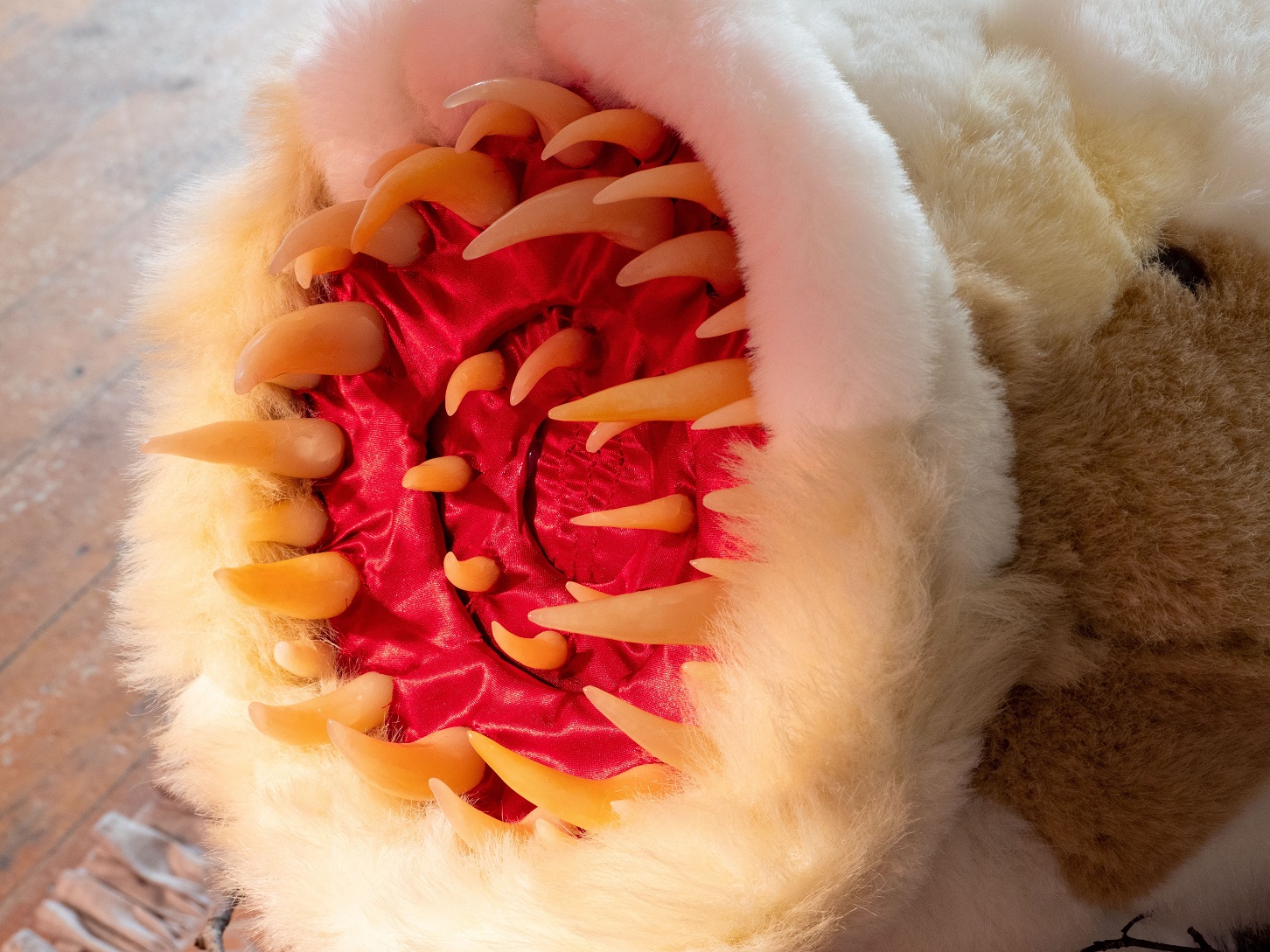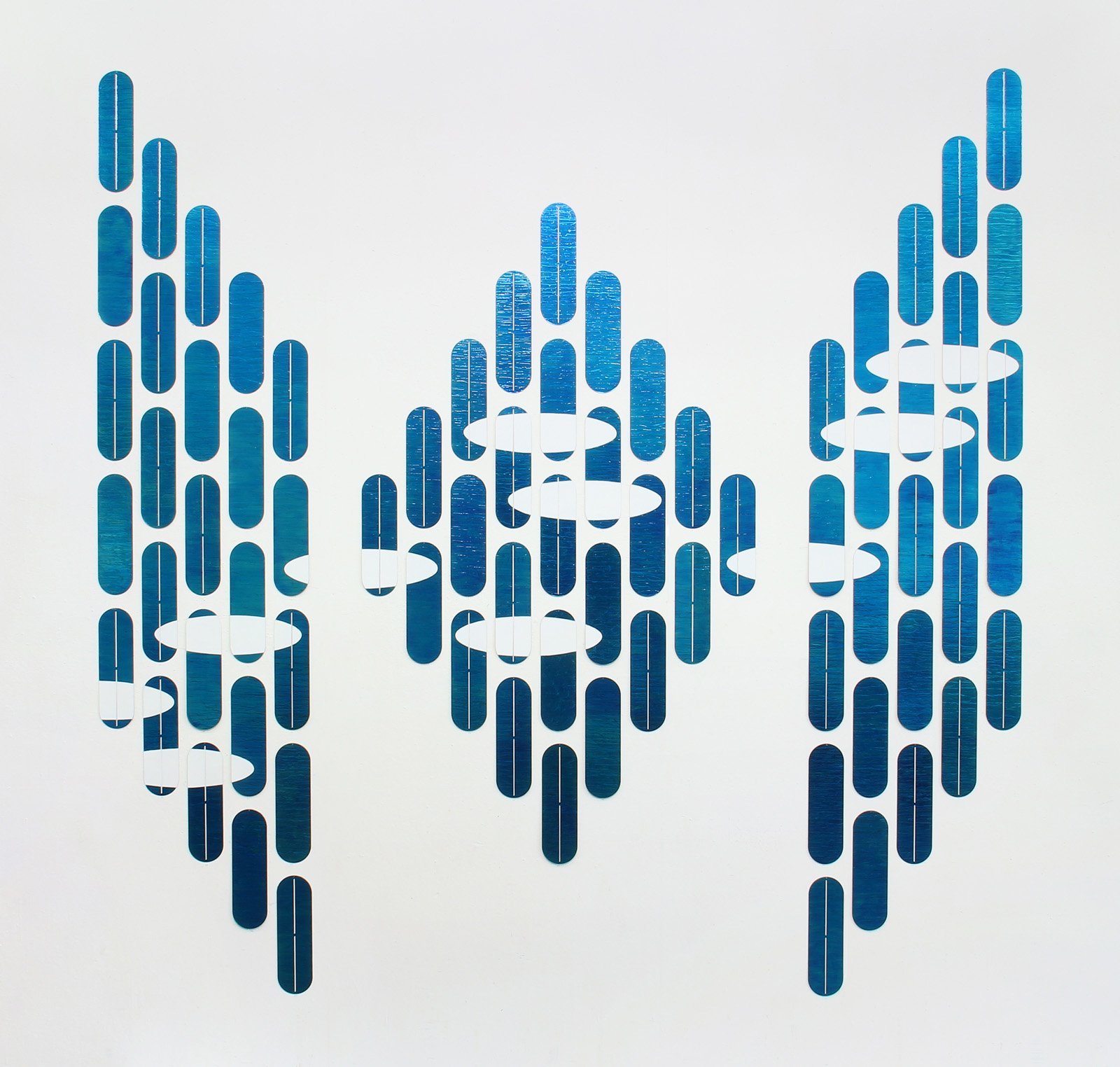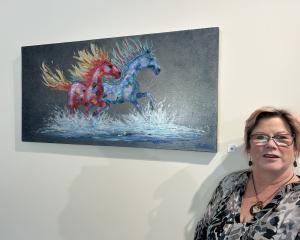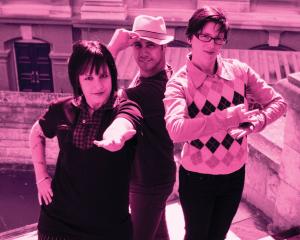![Untitled (c. mid 1990s, [pink 3]), by Martin Thompson, 415mm×590mm. Photo: courtesy of Brett...](https://www.odt.co.nz/sites/default/files/story/2024/02/untitled_pink_3.jpg)
(Brett McDowell Gallery)
Traditionally starting the exhibition year at Brett McDowell Gallery is a collection of works by Martin Thompson. Spanning the artist’s change in medium and location are small works on graph paper from the mid-1990s, when Thompson resided in Wellington, and larger scale works on prepared paper from after he moved to Dunedin.
Thompson’s work will be familiar to many viewers, but for those new to the scene, these works are constructed through a mathematical process. Using 1mm squared graph paper and ink pens, each unique work is calculated through completing both positive and negative iterations of the same formula, in the same saturated colour. Highlighter pink, deep purple or rust orange patterns are some examples on show.
The works also frequently include evidence of the process of making, such as surgically precise cut-outs of individual squares that are used to fix any errors along the way. This process of reconstruction is often a celebrated element of the work. Evidence of the artist’s daily life in dirty smudges or paper crinkles are also common.
Thompson’s art unfailingly engenders a sense of wonder and amazement: at the visual intricacy of each computation and the quality and beauty of a mind that could produce such work.

(New Lands: Gallery and Project Space)
"Nothing New" is an installation of illuminated soft sculpture that thoughtfully juxtaposes the genre of macabre horror and the aesthetic category of cuteness. Wild creatures and anthropomorphic domestic objects inhabit the exhibition space and generate imaginative scenarios and encounters through their arrangements.
Alive in an alcove of the room, is a fury lamp with teeth. In the centre of the exhibition is a dollhouse-like cube, with stalky feet, that roars at its tiny hungry looking bird-like offspring. The concentric, circular teeth of another work, make me think of the underground sand worms of Tremors or Dune, or even Stephen King’s The Langoliers that consume the past. There are elements of ferociousness in each of Wing’s creations, yet the materials and fabrics are soft and approachable. These creatures are both threatening and delightfully animated.
Deconstructed soft toys, sourced from second-hand stores, are the found object media of the artist’s practice. Through a process of unpicking and re-making these transitional objects as original wild creatures, Wing invites critical reflection on a range of topics: the consumerism culture of children’s entertainment, the psychological developmental elements of play, or human and animal behaviourism more generally, are some conceptual examples generated by this whimsical menagerie.

(Milford Galleries Dunedin)
Recent works by Russell Moses, Nigel Brown, Jenna Packer, Elliot Love and Rodger Mortimer make up Milford Galleries’ latest Studio 18D stockroom show. Aesthetically and thematically disparate, yet with connections across multiple topographies, each collection can be singularly appreciated.
Three large-scale composite works by Moses are composed of acrylic resin and polymer on stainless steel. These works are iridescent, formal conceptual reflections on both war and climate change, and for the artist, a call for peace.
Packer’s paintings are a series of motifs that resemble archipelago island clusters, blooming flowers and a theme of displacement — blue tarpaulin and car shelter encampments. The impact of climate change on the Pacific region is resonant.
Mortimer’s detailed embroidered cartographical compositions of coastlines of Aotearoa New Zealand and vignettes from Dante’s Divine Comedy encompass a personal reflection on contemporary postcolonial issues and a unique Catholic and Buddhist aesthetic.
Three works by Brown, a kererū and two ruru, are continued figurative and symbolic explorations on material and spiritual connectedness between nature and the human condition.
Rounding out the show, are Love’s finely rendered paintings of urban landscapes, with a keen eye for 1980s and ’90s classic cars, including a dented white 1980s Ford Laser hatchback and an orange 1967 Ford Falcon.
By Joanna Osborne












